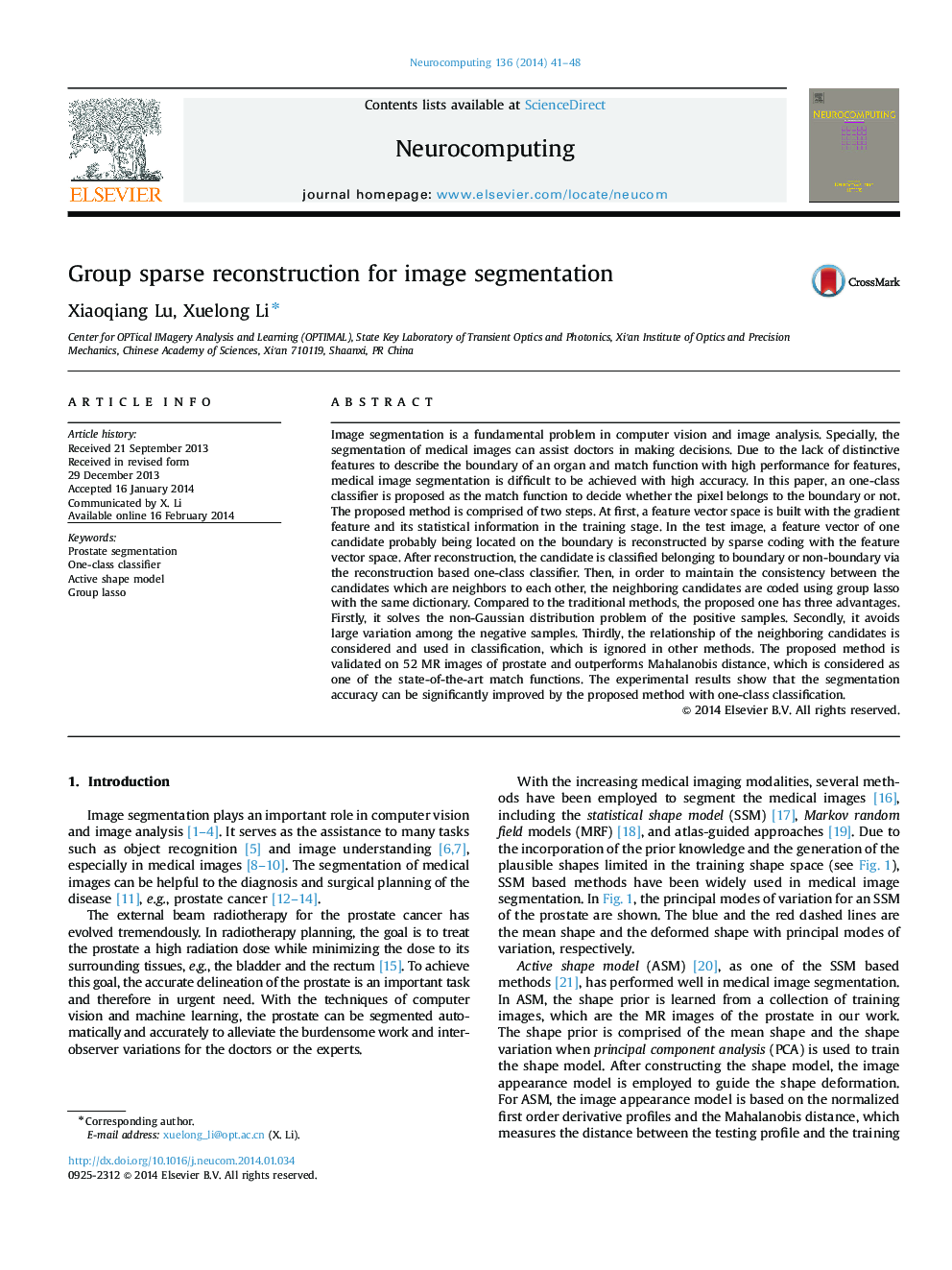| کد مقاله | کد نشریه | سال انتشار | مقاله انگلیسی | نسخه تمام متن |
|---|---|---|---|---|
| 406770 | 678111 | 2014 | 8 صفحه PDF | دانلود رایگان |
Image segmentation is a fundamental problem in computer vision and image analysis. Specially, the segmentation of medical images can assist doctors in making decisions. Due to the lack of distinctive features to describe the boundary of an organ and match function with high performance for features, medical image segmentation is difficult to be achieved with high accuracy. In this paper, an one-class classifier is proposed as the match function to decide whether the pixel belongs to the boundary or not. The proposed method is comprised of two steps. At first, a feature vector space is built with the gradient feature and its statistical information in the training stage. In the test image, a feature vector of one candidate probably being located on the boundary is reconstructed by sparse coding with the feature vector space. After reconstruction, the candidate is classified belonging to boundary or non-boundary via the reconstruction based one-class classifier. Then, in order to maintain the consistency between the candidates which are neighbors to each other, the neighboring candidates are coded using group lasso with the same dictionary. Compared to the traditional methods, the proposed one has three advantages. Firstly, it solves the non-Gaussian distribution problem of the positive samples. Secondly, it avoids large variation among the negative samples. Thirdly, the relationship of the neighboring candidates is considered and used in classification, which is ignored in other methods. The proposed method is validated on 52 MR images of prostate and outperforms Mahalanobis distance, which is considered as one of the state-of-the-art match functions. The experimental results show that the segmentation accuracy can be significantly improved by the proposed method with one-class classification.
Journal: Neurocomputing - Volume 136, 20 July 2014, Pages 41–48
